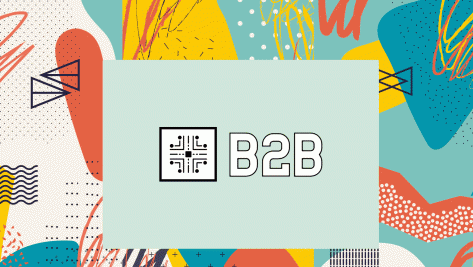In 1980, futurist Alvin Toffler coined the term “prosumer” in his book The Third Wave, to explain how, in the transition from an industrial to an information-based society, people would come to interact with products and services. Toffler envisioned a world in which the line between producer and consumer would blur (into the prosumer) as technology allowed people to take on both roles at once. His prediction, of course, proved remarkably on point: today’s digital economy is increasingly driven by people who not only consume but likewise produce goods and services, from creating content on social media to generating their own solar power. This shift represents one of – if not the – most significant changes in consumer behavior since the Industrial Revolution.
Prosumers have already transformed major industries. For instance, in the energy sector, homeowners with in-house solar panels can make “two types of exchanges with the power grid,” generating their own electricity and selling excess back to the grid. Social media platforms are another familiar example, with the likes of Facebook, Instagram, and YouTube turning casual viewers of content into creators of content and even influential voices that shape discourse and trends. Prosumers are now everywhere, from e-banking to self-service retail, and are redefining traditional service models.
The main distinction between prosumers and traditional consumers is their technical knowledge and economic interest in the product. Acting as “Beta Consumers” prosumers actively participate in shaping the final version of the product or services. As Toffler foresaw, the boundaries between producer and consumer continue to blur, merging into a single, more dynamic role.
The prosumer business model represents a paradigm shift in the relationship between producers and consumers. In this new model, businesses enable consumers to co-create and become producers themselves, tapping into their creativity and passion to foster an ecosystem of innovation. As Bodo Lang of the University of Auckland Business School, and coauthors detail, This leads to a mutually beneficial relationship between companies and their customers.
Integrating consumers into the value chain generates both practical and experiential benefits. Companies reduce overhead costs while consumers gain the authority to create and share their own content. The rise of internet platforms has accelerated this trend, with social media becoming fertile ground for prosumers who not only share their talents and opinions but also monetize their creations.
In today’s digital world, prosumers both have and expect more access and control over their experiences with products and services. This control comes via personalization and customization. Personalization refers to tailor-made messages and offers throughout the marketing cycle to match individual preferences, creating more empowered and demanding customers.
The transformation is evident in television and streaming services. For instance, customization can be seen in how companies such as Indian television provider Tata Play enable prosumers to record programs and personalize their viewing experience. Time-starved consumers can skip advertisements through set-up box services including Jio Fiber, Airtel Extreme, and Tata Play. For organizations, this customization offers valuable insights on favorite channels, timing, and messaging that can be used to develop and curate better products and services for their customers. Companies like Netflix, Starbucks, and Amazon are already using customization processes to personalize their offerings.
New technology has further generated new versions of prosumers. Broadly, based on consumer involvement in the production process, prosumers can be categorized into six distinct types:
- DIY Prosumers enjoy creating and fixing things by themselves with the help of service instructions, from repairing household products to computer programming.
- Self-service Prosumers take this further by utilizing specialized machines, tools, and platforms – for example, using design software such as Canva to create and modify digital content.
- Customizing Prosumers personalize existing products and services to meet their personal needs.
- Collaborative Prosumers work together to create something new. Platforms like YouTube, Instagram, and TikTok depend entirely on this type of user-driven content, where consumers collaborate through remixes, trends, and creative expressions.
- Monetized Prosumers turn their creations into income streams, as seen with social media influencers.
- Economic Prosumers participate in the value chain by sharing their own resources, such as renting out their property through Airbnb.
Producers are evolving their strategies to engage with prosumers while addressing key concerns about security and privacy. Following the four cornerstones of CRM – customer knowledge, relationship strategy, communication, and individual value proposition – companies are transforming their production processes in essential ways.
First, they are integrating prosumers into the value chain, emphasizing user-centric and user-driven perspectives. For example, empowering consumers with advanced tools for a range of activities including home repair to urban farming. Agricool, an agritech startup, empowers city dwellers to grow their own food within a container. Second, companies are simplifying production processes to create broader participation. Some focus on creative engagement, like Nerolac Paints’ partnership with Talent House India in 2012 in which consumers recreate their own version of the company jingle.
Companies around the world are developing distinct strategies to harness prosumer potential, each adapted to regional markets and consumer behaviors. Four key approaches have emerged:
- Co-Creation: Companies engage their consumers with customizable products and services through the process of co-creation and personalization. For example, Nike By You allows members to tap into their creativity and design their own sneakers. Through LEGO Ideas, the building-block company provides a platform for users to showcase design proposals for new LEGO sets and vote for those suggested by their peer consumers/designers.
- Brand Advocacy: In Western markets, companies collaborate with influencers and everyday consumers to play a vital role in framing narratives of the brand through several activities such as unboxing, product reviews, and how-to videos posted on Instagram and YouTube. In the Chinese market, social network platforms such as WeChat and Weibo are used to post reviews and videos which are incentivized.
- Crowdfunding: In emerging markets such as Brazil and India, crowdfunding is popular for resolving problems pertaining to affordable healthcare and sustainable agriculture, where prosumers participate and contribute ideas along with resources to meet local needs.
- Mapping the Consumer Need and the Cultural Nuances: Companies tailor their marketing and product design strategies to meet local trends of the prosumers. They are doing this by incorporating local cultural elements into their localized product versions of global offerings.
The strength of the prosumer marks a pivotal shift in the business landscape. Companies have long talked about putting customers first, but today successful organizations are those that go further – by turning customers into active partners in innovation and growth. From Nike’s customizable sneakers to LEGO’s crowd-sourced designs, these partnerships redefine how value is created for companies and customers alike.
Success in this new environment requires more than just technological investment. Companies must develop nimble processes that support co-creation, build communities that foster engagement, and create platforms that scale effectively across regions and cultures. Those who get it right aren’t just reducing costs or boosting loyalty – they’re tapping into emerging consumer trends specific to their consumers. The prosumer revolution is just beginning. Organizations that truly embrace this shift will be best positioned to thrive in what will undoubtedly prove to be an increasingly connected and participatory marketplace.
© IE Insights.











